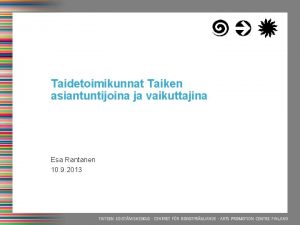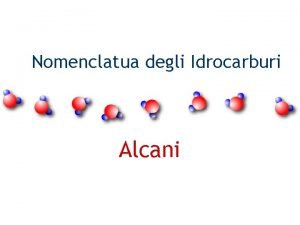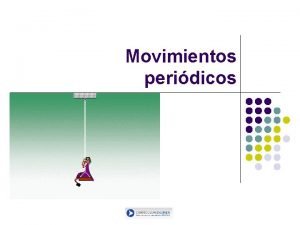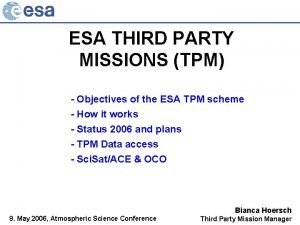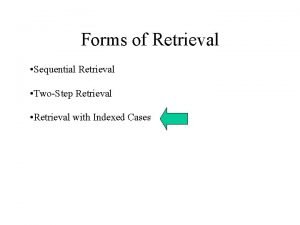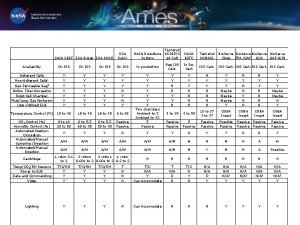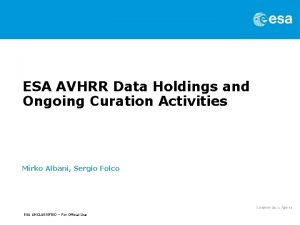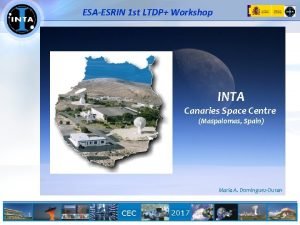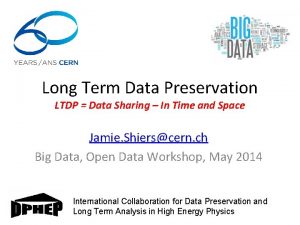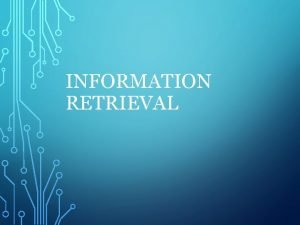Challenges with AVHRR retrieval at highlatitudes ESA LTDP









- Slides: 9

Challenges with AVHRR retrieval at high-latitudes ESA LTDP meeting DLR, Munich 20 -21 April 2015 Karl-Göran Karlsson SMHI, Norrköping, Sweden Öystein Godöy Norwegian Meteorological Institute Oslo, Norway

Current projects and activities ’Normal’ HRPT/LAC reception and processing in Norrköping and in Oslo for operational met/hydro/ocean forecasting/monitoring services: Higher level products: Cloudiness, cloud properties, SST, ice, snow, sea colour Additional activities linked to EUMETSAT SAF Network: - Development of AVHRR cloud processing package PPS in the Nowcasting Satellite Application Facility (NWC SAF) - High-resolution ice, SST and surface flux mapping in Ocean and Sea Ice Satellite Application Facility (OSI SAF) + NORMAP + Cryo. Clim Interesting links to global AVHRR (GAC) processing: - Clouds, Surface albedo and surface radiation products (CLARA dataset) in Climate Monitoring Satellite Application Facility (CM SAF) 2

Ice monitoring

Snow monitoring

Improved Arctic cloud analyses Example for the monthly mean of cloud cover for January 2008: CLARA-A 1 CLARA-A 2 CALIPSO (Plots from Stefan Stapelberg, DWD) Preliminary CLARA-A 2 results based on new patch to PPS version 2014 The amount of false clouds have been reduced which leads to very low cloud amounts. However, some of this is related to that many Arctic clouds are not detectable using AVHRR during the polar night! 5

CLARA-A 2 consistency Example for January 2008: Similar results from all involved satellites! NOAA-15 NOAA-18 NOAA-16 NOAA-17 METOP-A 6

Work on probabilistic cloud masks New probabilistic cloud mask linked to PPS version 2014: Part of an original NOAA-18 AVHRR GAC scene in satellite projection over the North American west coast (with Gulf of California and Baja California in the center) registered in ascending mode (i. e. , North is down, South is up) from 26 January 2010. (Method described by Karlsson et al. , 2015, in Remote Sensing of Environment, March 2015) 7

Ideal dataset • Stable and trend-free radiances • Geolocation within 1 km • All Level-1 steps (from Level 0) well documented including data coverage (data gaps, corrupt data, calibration problems) • Well described sensor characteristics (spectral response) • Standardized format, i. e. same Level 1 format as other ancillary data for higher level processing (currently net. CDF best candidate) 8

Challenges and conclusions Challenges: - Polar winter conditions: Largely reduced set of useful information + very unfavorable meteorological conditions (near surface temperature inversions) - Uncertainty estimations for cloud masking! - Transfer to new sensors (VIIRS, SLSTR, Metimage/VII) - Improving data homogeneity Conclusions/Recommendations: - Large progress achieved through international collaborations - Continued efforts on uncertainty estimations 9




